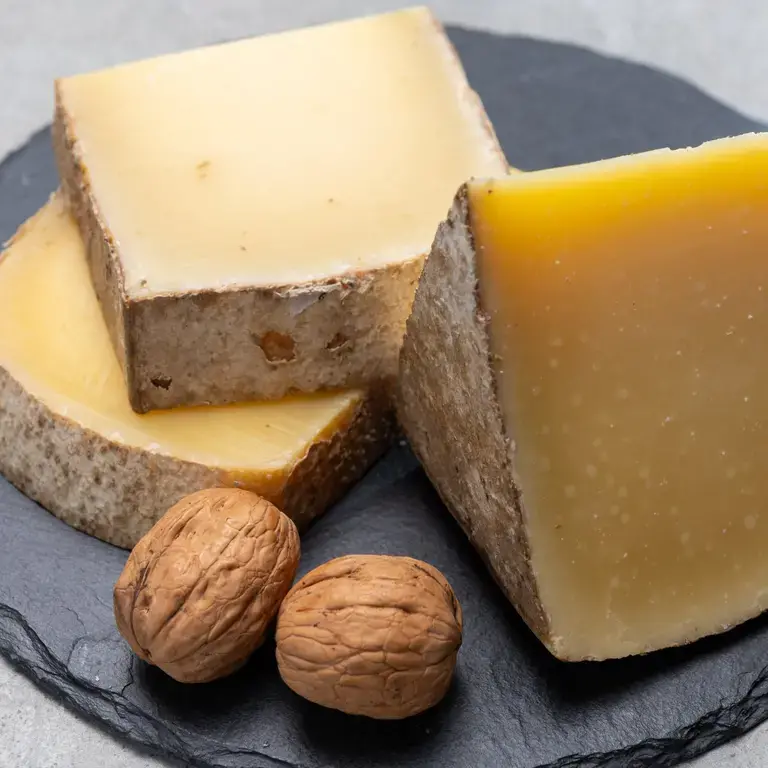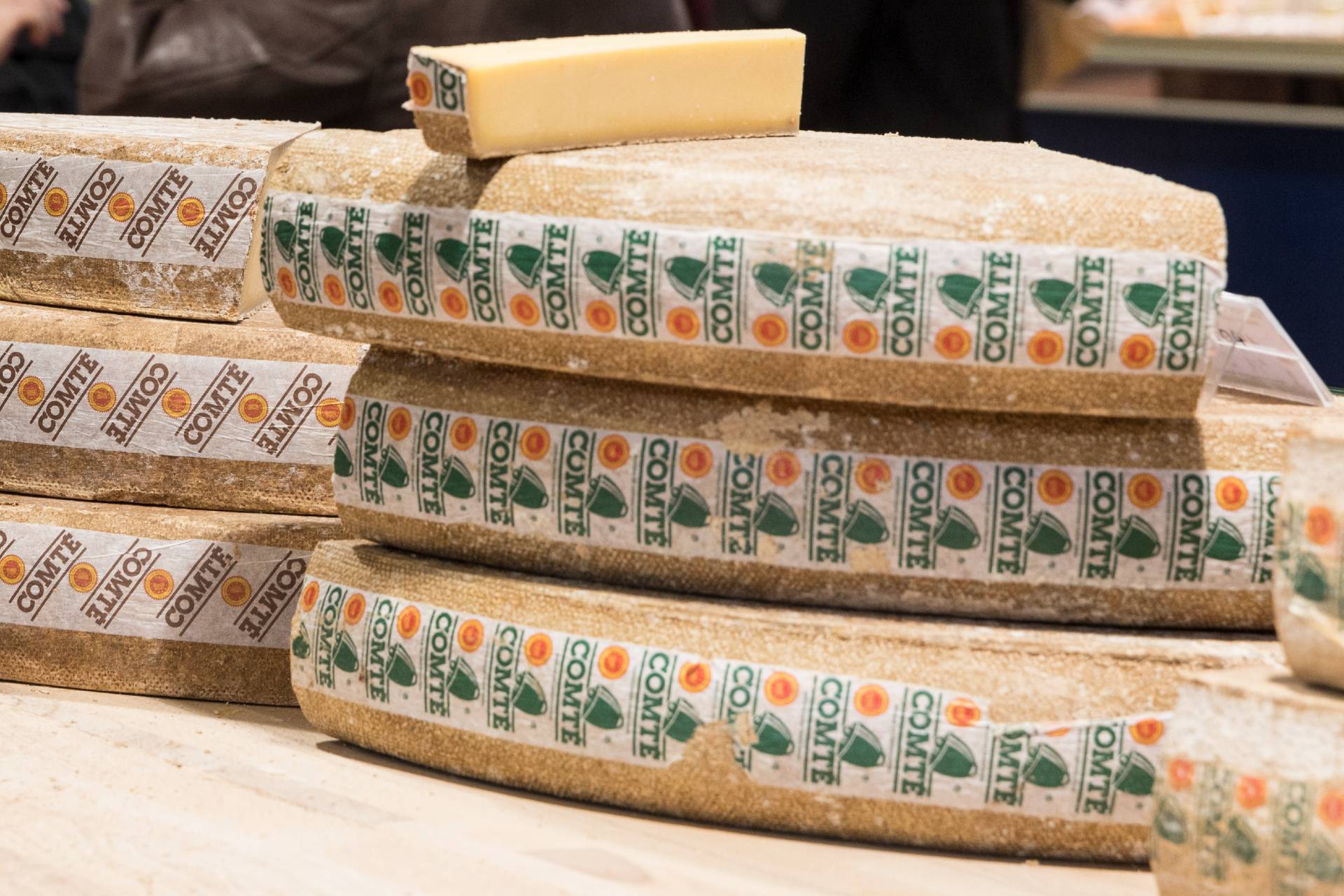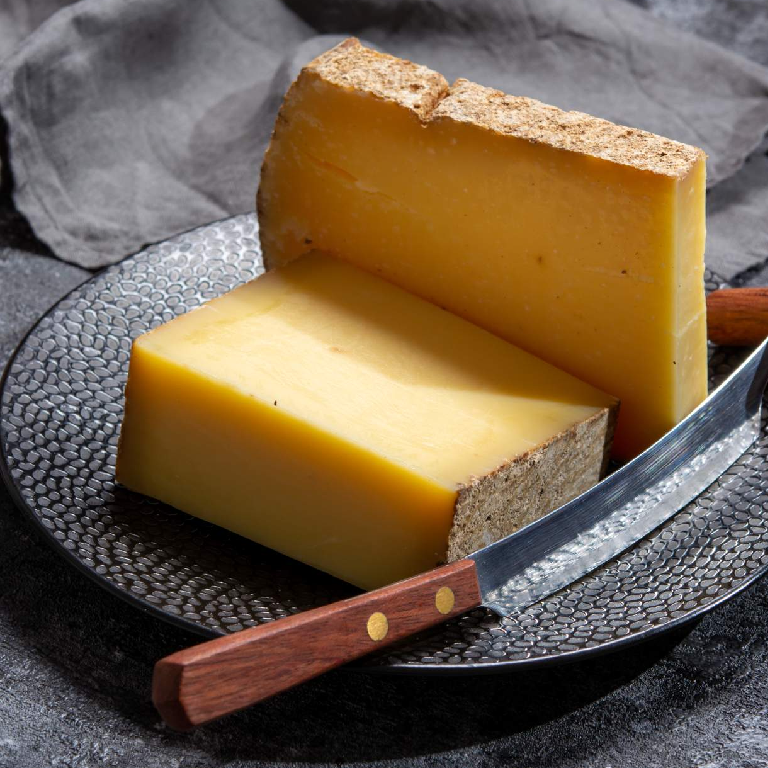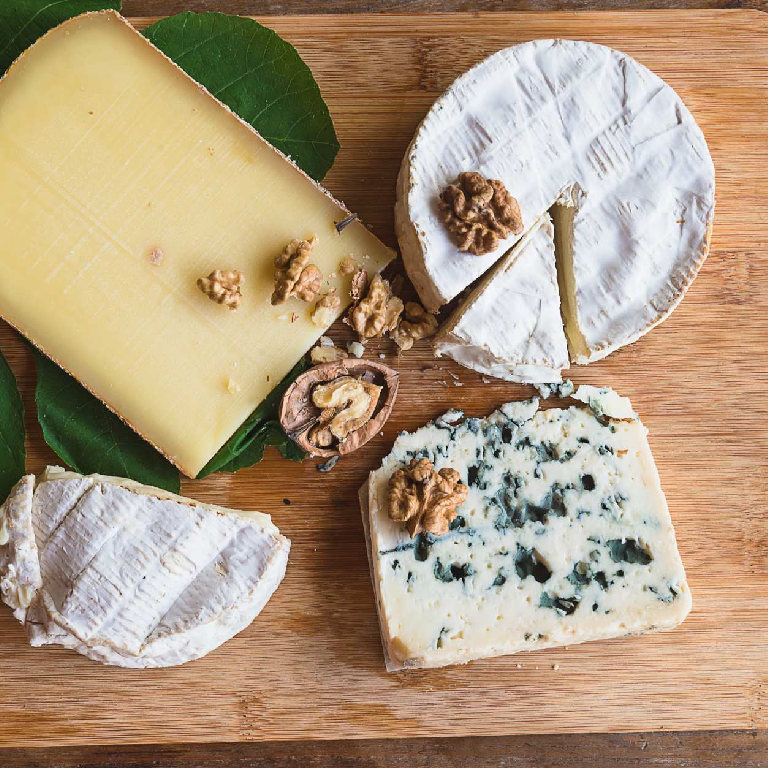There are a truly impressive number of French cheeses, and far too many to list here. For a comprehensive list, take a look at Wikipedia’s list of French cheeses. Cheese-making is an intrinsic part of French culture, with every region having its own iconic cheese.
French cheeses are made using cow’s, goat’s or sheep’s milk, and can be divided into three main families, as follows:
Pressed cheeses, or hard cheeses are typically made of cow’s milk, and are pressed to remove most of the liquid during production. They come in large wheels, from which you can buy small slices. There are ‘cooked’ cheeses, which are heated during production, and ‘uncooked’ cheeses, which are not. Examples of French pressed cheese include Comté and Emmental.
Soft cheeses are extremely popular in France, with hundreds of different varieties. Popular varieties include Brie and Camembert.
Blue or bleu cheeses are made with cultures of the mould Penicillium, which gives them their characteristic blue or green veins. They have a sharp, salty flavour, and a pungent smell, which is caused either by the mould, or various specially cultivated bacteria. Popular French blue cheeses include Bleu d’Auvergne and Roquefort.
To discover more about some of the best French cheeses, take a look at this rundown of 21 French cheeses you should try at least once from France Hotel Guide.
Recipes
Comté is the perfect choice for melted cheese dishes like raclette and fondue, and it can also be used in a variety of other ways. If you want to try some Comté at home, why not take inspiration from one of these mouthwatering recipes?
For an easy family meal with real wow factor, try this simple but delicious Comté chicken recipe from Great British Chefs. Your family will love the rich, savoury sauce, made with chicken stock, cream, white wine and Comté.
The perfect light lunch or supper, this French leek quiche with Comté cheese by Del’s Cooking Twist uses leeks and Comté cheese for a gourmet take on a classic quiche.
For more Comté recipes, including an irresistibly flaky onion tart with apples, bacon and Comté, a light and creamy linguine with broccoli in a Comté and thyme sauce, and a decadently delicious Comté, banana and vanilla tarte tatin, take a look at these three Comté cheese recipes for the weekend from French Waterways.












